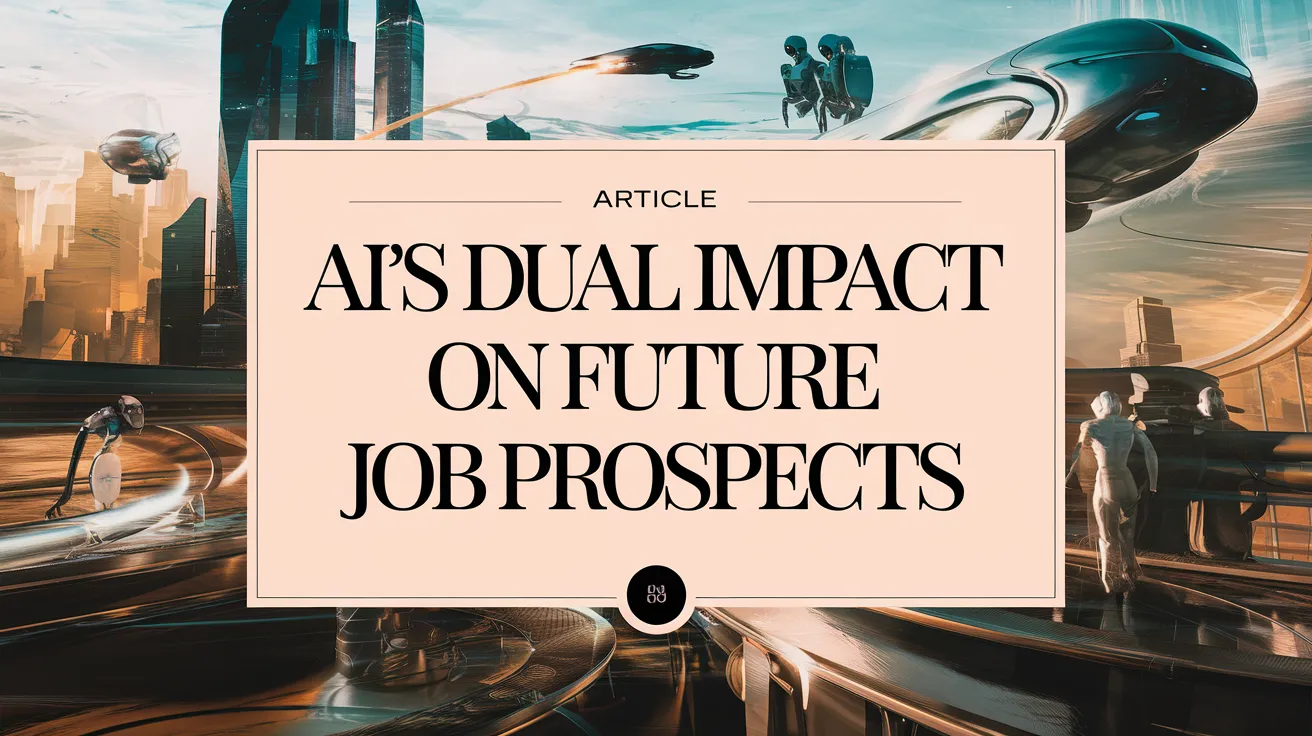AI’s Dual Impact on Future Job Prospects

No generation is untouched by the cultural upheaval brought on by new technology, and in the 2020s, artificial intelligence (AI) is at the forefront of this disruption. Love it or fear it, AI presents endless possibilities, although many individuals express concern about potential job losses.
Amidst these fears, others recognize a widening range of new opportunities. For instance, Max Hamilton, a graphic designer with over two decades of experience, has proactively adapted her career in response to the challenges posed by generative AI. Faced with a shrinking job market, she turned her focus to illustration work for children’s books, integrating her skills in writing to contribute to the entire book creation process. “I saw that happening a few years ago and that’s when I pivoted,” Ms. Hamilton explains, highlighting the flexibility required to flourish in a changing landscape.
AI’s Impact on Various Job Sectors
Data indicates that creative professionals like Ms. Hamilton can expect an increasing presence of AI in their fields. Research assessed various occupations under the ANZSCO classification and ranked them based on the potential impact of AI. As Evan Shellshear, an innovation and technology expert from the University of Queensland, points out, it is not entire jobs at risk, but specific tasks and skills that may be altered or automated by AI technologies.
The findings suggest that generative AI technologies are likely to enhance productivity among workers rather than entirely displacing them, particularly concerning high-skilled occupations. Dr. Shellshear emphasizes the likelihood of job creation, stating, “It’s making a lot of things that were impossible, possible,” particularly for small businesses that previously lacked essential expertise and resources.
Real-Life Experiences with AI
For Melanie Fisher, a self-styled fan of science fiction, the advent of generative AI presented an exciting opportunity. After experimenting with ChatGPT—initially questioning its knowledge of food regulation due to her background in the industry—she leveraged the technology to develop a game app for her granddaughter Lilly. Although she initially felt intimidated by the coding process, the AI tool provided recommendations to guide her through the creation of a game based on imaginative stories they developed together.
Despite her successful foray into game creation, Ms. Fisher acknowledges dual concerns about the future. “I think it’s a great leap forward for people, but I do worry it’s going to massively displace lots of people from work.”
Corporate Perspectives and Job Trends
Notably, the recent trajectory of several industries raises questions about job security in the age of AI. For example, Commonwealth Bank Australia made headlines by announcing layoffs attributed to AI, an action they later retracted after backlash. Professor Nicholas Davis, an AI expert at the University of Technology Sydney, asserts that trends toward layoffs reflect premature expectations rather than a complete transition to AI-driven operations.
According to Professor Davis, there is a “disconnect between expectation versus reality,” anticipating that many organizations may initially decrease employee numbers only to need to rehire later as the systems don’t yield the anticipated benefits. Citing the example of self-checkout machines in stores, he observes that the consumer experience often diverges from organizational expectations.
The Importance of Human Skills
While AI can facilitate numerous tasks, the human elements of communication, management, creativity, and empathy remain irreplaceable. Dr. Shellshear reiterates that professional competencies require education, training, and real-world expertise to reach proficiency. He has found that careers involving collaboration, creativity, and problem-solving are among the hardest to replicate with AI.
As the work landscape shifts, developing a diverse skill set becomes crucial. “The more you’re able to add value, the less it matters that things get taken away,” states Professor Davis, emphasizing that job security often hinges on versatility and the ability to adapt to new demands.
In conclusion, the evolving role of AI in the workforce presents both challenges and opportunities. As industries adapt, continuous learning and a focus on human skills will be vital for navigating the coming transformations.